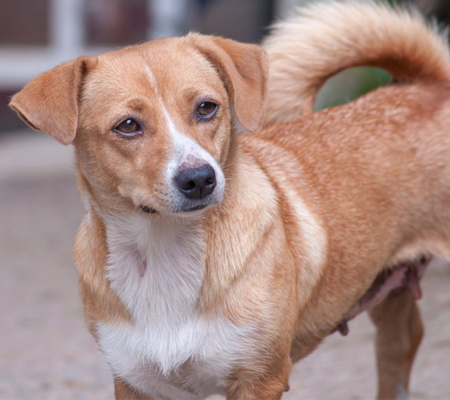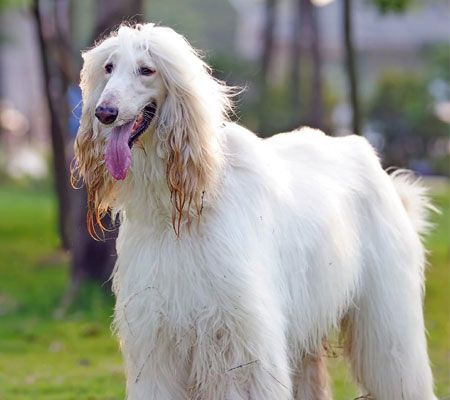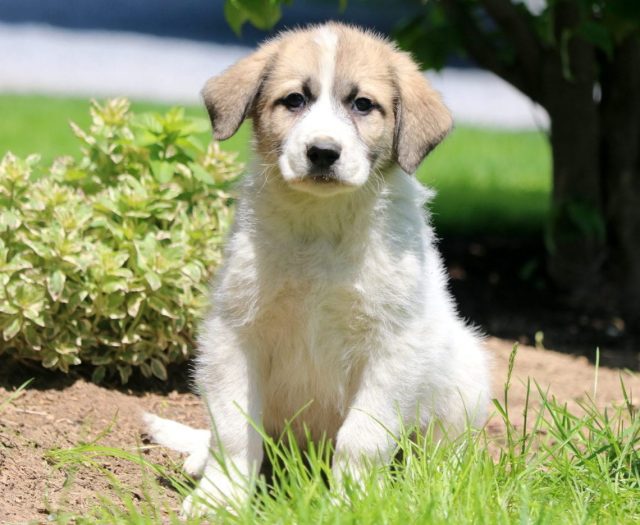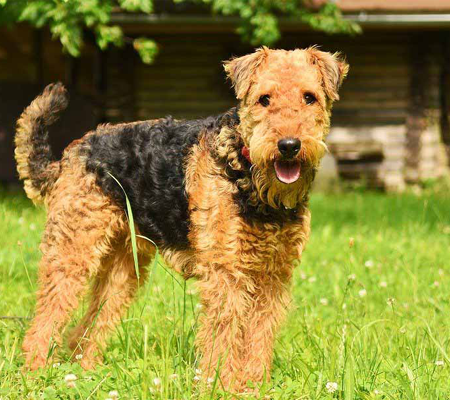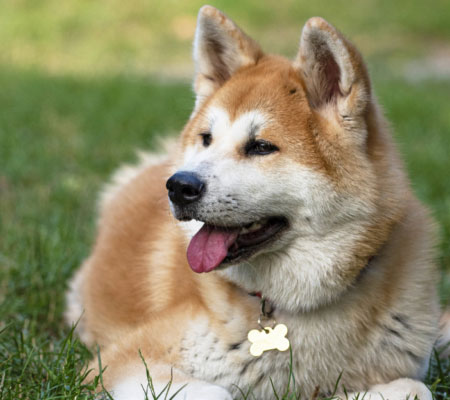The Austrian Pinscher is a medium-sized dog with
a lot of personality. He's been regarded as a charming buddy who like to live
in the country or suburbs. He's not the best fit for condo dwellers or
overworked parents. Even though he was once employed as a ratter, don't
anticipate your Austrian Pinscher to be a formidable hunter. Because he is
forceful and committed to his family, he is better suited as a guard dog.
Strangers make him suspicious, and he will raise the alarm. He is usually easy
to teach, but he does require a constant trainer to keep him from becoming
rebellious.
Austrian Pinscher Highlights
Breed Size
Medium
Nature
Playful, Friendly
Energy Level
Active
Intelligence
High
Barking Level
When Necessary
Coat Length
Short
Breed Group
Terrier
Droll Amount
Low
Good with
Familes, Children, Dog
Feed Level
Medium, High
Colour Type
Brownish Yellow, Russet Gold, Stag Red, or Black and Tan
Other Facts
Playful, compassionate, loyal, and protective.
Dog History
The Austrian Pinscher is clearly an Austrian
breed, with a colourful history of crossbreeding with a variety of local
Austrian farm dogs of various ancestries. Farmers in the area were working to
create a breed that would be a good companion, security dog, and vermin hunter.
The Austrian Pinscher began to become extinct as farming technology advanced.
He was on the verge of extinction at the end of the nineteenth century. Emil
Hauck began striving to revive the breed at that time. The Austrian Kennel Club
recognised the Austrian Pinscher as a distinct breed in 1928, under the name
Austrian Shorthaired Pinscher, thanks to Hauck's efforts. Even inside Austria,
the Austrian Pinscher was still regarded an uncommon breed, and he was almost
annihilated again during World War ll.
In the 1970s, there was just one dog remaining
that came straight from Hauck's lines. The breed was reconstructed when this
dog was mated to other Pinschers of uncertain heritage. A small group of
Austrian Pinschers is utilised as foundation stock, with the majority of these
dogs still residing in Austria. The current generation of Austrian Pinschers
differs somewhat from the original Hauck line. Today's dogs are medium-sized
and have pear-shaped heads. He is a muscular dog that can also be very
energetic. The American Kennel Club does not recognise him since there are too
few Austrian Pinschers in the United States. However, in 2006, the United
Kennel Club recognised him and permitted him to compete.
14-18 inch 8-14 kg 10-13 year
Height

Weight

Life Span
Health and Care
- Because the Austrian Pinscher is an uncommon
breed, nothing is known about its health issues or other ailments. According to
the information available, they are a generally healthy breed with minimal
health issues.
- Austrian Pinschers are not known to suffer from
any common minor health issues. The only thing to keep in mind is that their
skin might be sensitive and dry and irritating. Only bathe them if absolutely
necessary.
- Hip dysplasia and cardiovascular disease are the
two major illnesses known to affect Austrian Pinschers. Hip dysplasia affects a
large number of dog breeds. It's a degenerative disorder caused by the hip ball
and socket not fitting properly. It will deteriorate with time and may become
incapacitating. If the dog's movement is limited or they are in discomfort,
surgery may be a possibility.
- The topic of cardiovascular illness in Austrian
Pinschers is also discussed. However, no research have been undertaken to
verify that Pinschers have a greater incidence than other breeds because there
aren't enough of them to support a study at this moment.
Dog Breed Care Tips and
Important Instructions
Austrian Pinschers must engage in some form of
physical exercise on a regular basis in order to burn calories, stimulate their
thoughts, and maintain their health. Daily exercise also aids in the prevention
of boredom, which can lead to destructive behaviour in austrian pinschers. The
majority of your austrian pinscher's innate needs to chase, retrieve, chew,
dig, and herd will be satisfied by going outside. Exercise requirements vary
depending on your austrian pinscher's health and age, but ten minutes in the
back yard and a daily walk down the street are unlikely to suffice. If your
austrian pinscher is a 6- to 18-month-old adolescent, his needs will most
likely be higher.
Brushing your austrian pinscher on a regular
basis can help prevent shedding and keep him clean. During the summer or other
warm weather, check for ticks and fleas every day. The majority of austrian
pinschers only require a bath a few times each year. Remove any mats from the
coat of the austrian pinscher before bathing. If you don't rinse all of the
soap out of the coat, dirt will attach to it.
Adults are definitely more difficult to handle
than puppies. Take one of your hands and lay it under the dog's chest, with
either the forearm or the other hand supporting the dog's hind legs and rump to
carry your austrian pinscher puppy. Never try to raise or grab your puppy's
front legs, neck, or tail. Pick up a bigger, full-grown austrian pinscher from
below, holding his or her chest with one arm and his or her bottom with the
other.
Make sure you follow the licencing guidelines set
forth by the community. The licence should be attached to your austrian
pinscher's collar. If your austrian pinscher gets lost, the licence, along with
an identity tag, will most likely help you find her.
Feeding
- Between the ages of eight and twelve weeks,
Austrian Pinscher pups require four bowls of food every day.
- Puppies between the ages of 3 and 6 months should
be fed three times a day.
- In a 24-hour period, feed pups aged 6 months to 1
year two bowls of food.
- When the austrian pinscher reaches the age of
one, he or she only need one feeding every 24 hours.
- However, two smaller bowls may be preferable for
austrian pinschers. It is your obligation to adjust your dietary habits to
those of your austrian pinscher.
Adult austrian pinschers should eat a
well-balanced diet of high-quality dry dog food, which they can mix with water,
canned food, or broth. Cooked eggs, cottage cheese, and fruits and vegetables
may also be enjoyed by your austrian pinscher, but these additions should not
account for more than 10% of her daily meal ration. Puppies of Austrian
Pinschers should be fed high-quality, name-brand puppy food. However, please
minimise "table food" because it can lead to mineral and vitamin
shortages, dental and bone problems, as well as fussy eating and obesity.
Clean, fresh water should always be accessible, and food and water bowls should
be washed regularly.
Fun Facts
- Talented Dogs When it Comes to Pest Control
- Superb Guard Dogs
- Wonderful Family Loyalty
- Good With Other Pets
- Great To Train
- Low Maintenance Canines
- Dogs That Love to Run
- A CoolCharacter to Have Around the Home
Home Training Tips and General
Information
Companion austrian pinschers may be a joy to
nurture if they are well-behaved. However, if your austrian pinscher isn't
properly taught, he or she might cause problems. The basics—"Down,"
"Heel," "Off," "Sit," "Stay,"
"Come," and "Leave it"—will strengthen your austrian
pinscher's bond with both the austrian pinscher and the pals. If you have a
puppy, start educating him on appropriate conduct straight away! As a motivator
and reward, use a goodie. When puppies have had enough vaccinations, they can
begin obedience classes. For more information about obedience schools, contact
your local SPCA or humane organisation. Even as a puppy, always walk your
austrian pinscher on a leash. You may rest assured that your austrian pinscher
will come to you when you call. You can't play with a disobedient or violent
austrian pinscher.
FAQS
|
What are the characteristics of Pinscher dogs? |
|
Miniature Pinschers, often known as the "King of Toys" because
of their regal look and confident demeanour, are brave, lively, and alert
companion dogs who like spending time with their people. They can adapt to
apartment living, but they require a lot of exercise because to their
tremendous activity. |
|
Can you tell me if Austrian pinschers are decent dogs? |
|
Austrian Pinschers are clever dogs, but their obstinacy need a tough,
constant trainer. If you live in the country or the suburbs, they make
excellent family dogs. They like being around their families and are lively
and friendly with them. |
|
Is it simple to train Austrian Pinschers? |
|
The forceful and resolute Austrian Pinscher is easy to train and
clever, making it an excellent choice for a powerful leader. As long as tiny
animals aren't present, he's a robust watchdog with a lot of energy and is
dedicated to his family. The Austrian Pinscher has a silky coat that is
easy to maintain and remains lively well into adulthood. |
|
Are Austrian pinschers well-behaved when they're not on a leash? |
|
Because of their intense propensity to hunt prey, it is not suggested
that they be allowed to walk off leash. It's preferable to introduce them to
cats or other small pets in the house while they're young. Youngsters and
Austrian Pinschers can get along if the children are taught to treat the
dog with respect. |
|
Do Austrian pinschers have a distinct odour? |
|
There is no odour to the Austrian Pinscher. This breed requires a lot of
mental and physical stimulation to keep him from becoming bored. |
Austrian Pinscher Unique Name
| Male Name | Female Name |
|---|---|
| Brody | Addie |
| Buster | Betsy |
| Cody | Bear |
| Dante | Cookie |
| v | Gidget |
| Ivan | Harper |
| Koda | Lena |
| Louie | Libby |
| Milo | Maddie |
| Norm | Olivia |
| Pablo | Pandora |
| Parker | Rosie |
| Ralph | Sage |
| Rockwell | Sissy |
| Rufus | Sugar |
| Smoky | Tilly |
| Tucker | Blanche |
| Tex | Buffie |
| Truffles | Codi |
| Twinkle | Tequila |

